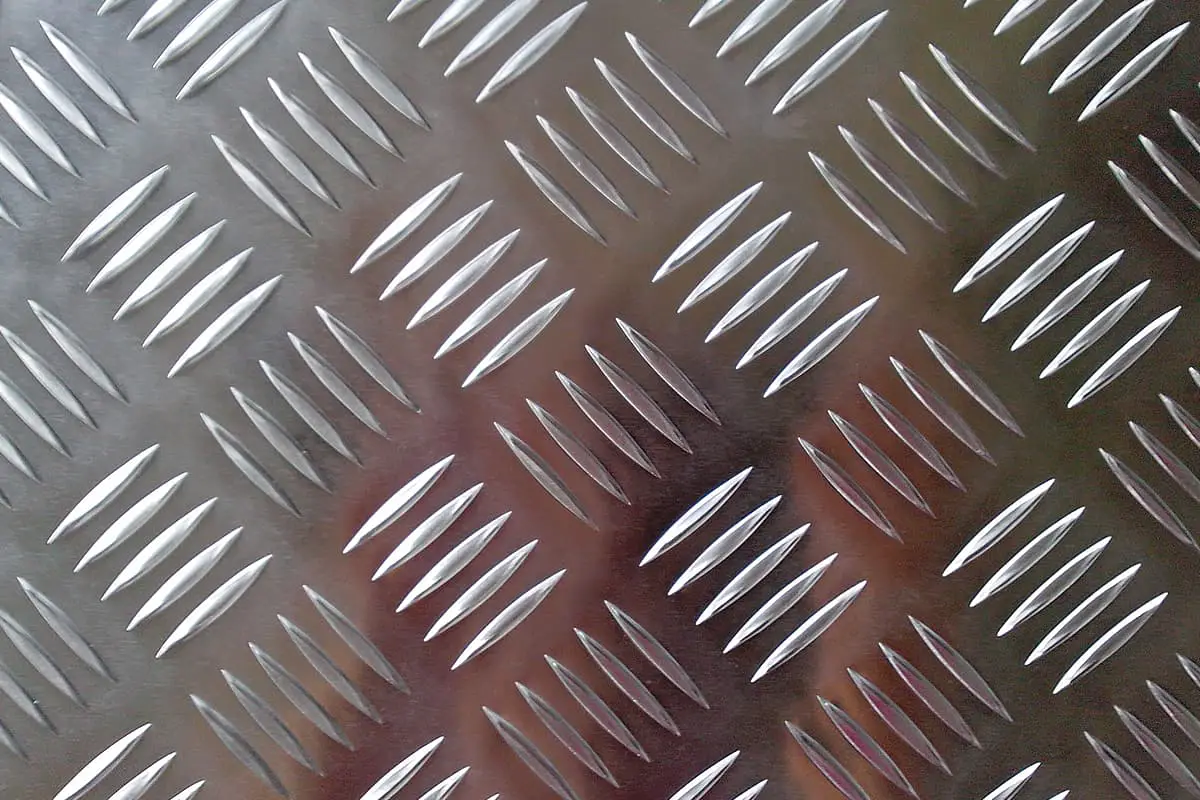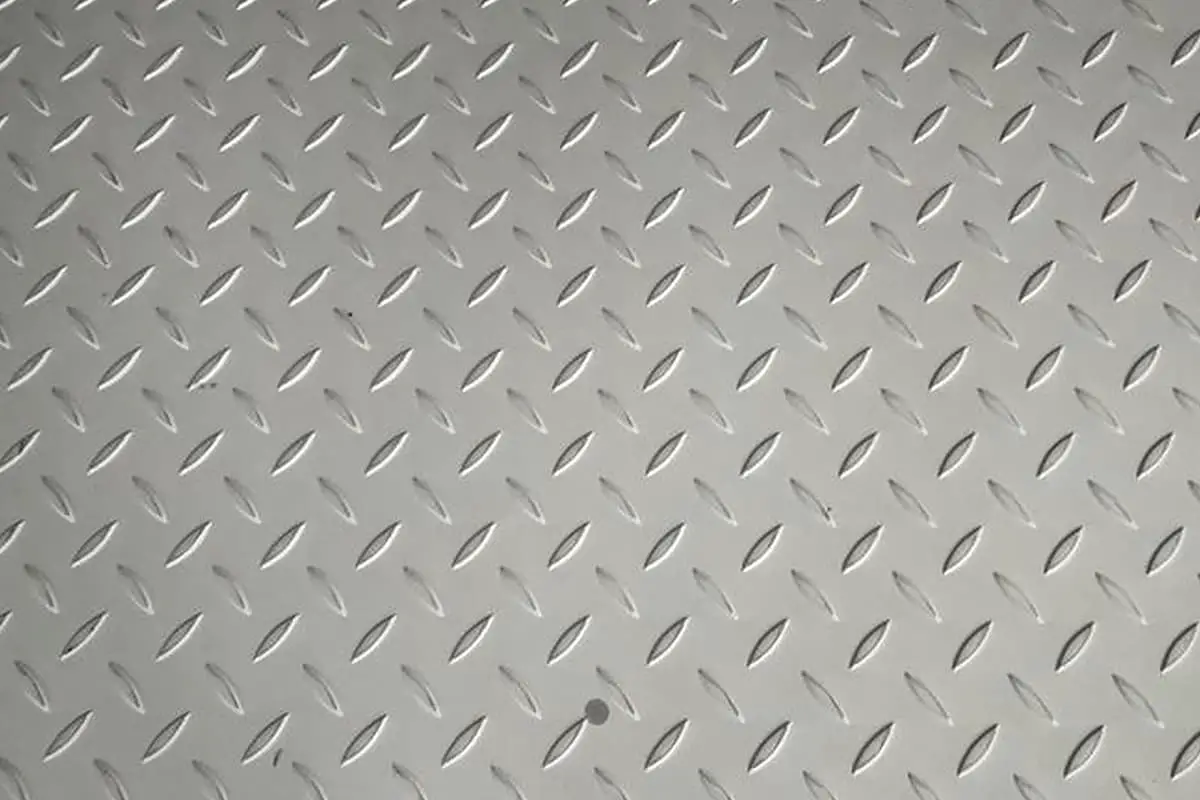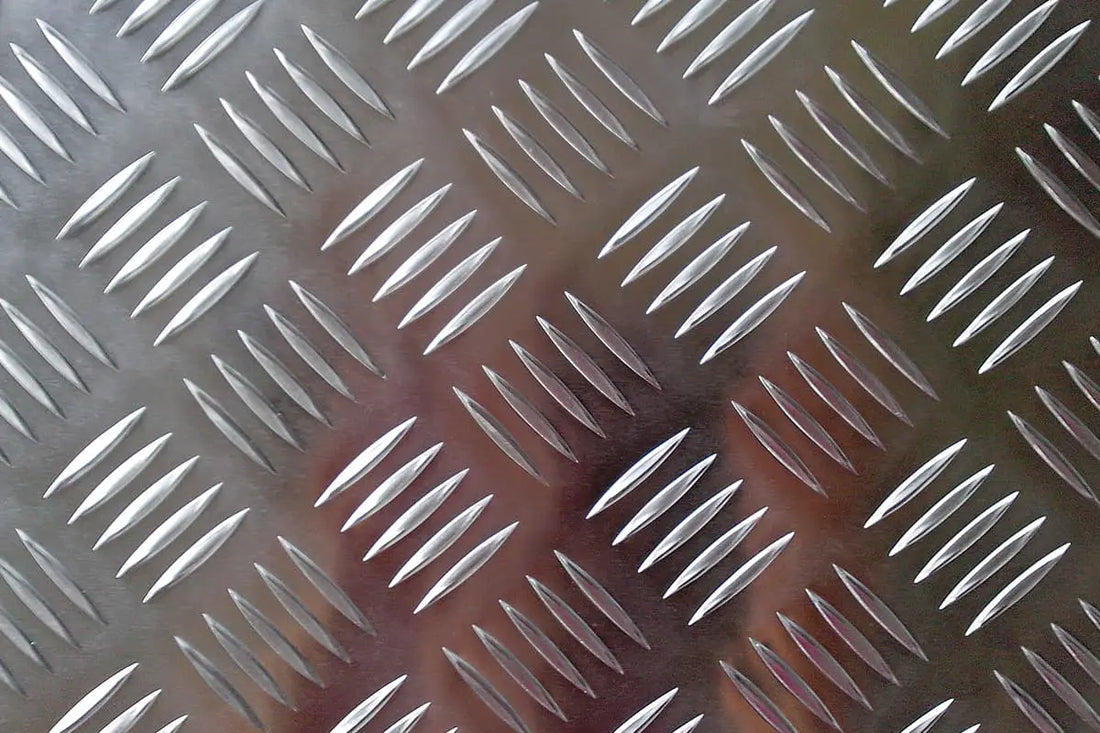The method for calculating the weight of a checkered board varies depending on factors such as material and pattern shape. Generally, the formula for calculating the weight of a steel sheet is: W (kg) = 7.85 x thickness.
The theoretical weight differs for different types of checkerboards. For example, the theoretical weight of a lentil-shaped checkered plate is 40.1 kg per square meter. Depending on the shape and thickness of the pattern, the theoretical weight per square meter can vary from 1.6KG to 29.5KG.
How does the checkerboard material affect its weight?
The material of the checkerboard significantly influences its weight. Firstly, the density of the checkerboard is a crucial determinant of its weight. A denser checkerboard, due to the greater mass contained per unit volume, will weigh more; on the other hand, a less dense checkerboard will be relatively lighter.
Additionally, differences in materials, such as aluminum alloy profiles, stainless steel plates and plain steel, lead to variations in theoretical basis weights per square meter. This implies that even checkerboards of the same size and thickness, due to differences in material, will have different weight in reality.
The shape of the checkerboard is also a factor that influences its weight. Different shapes of patterns such as diamond, lentil and round bean will result in different weights. This indicates that when considering the weight of a checkerboard, one must take into account not only the impact of the material, but also the specific shape of the pattern.

It is important to note that these calculations should be used for reference only. Actual weight may differ from theoretical weight by a margin of error of 0.2% to 0.7%.
Checkered Steel Plate Weight Table
| Thickness (mm) |
Permissible deviation (mm) |
Diamond (kg/m²) |
Lentil (kg/m²) |
Round beans (kg/m²) |
|---|---|---|---|---|
| 2.5 | ±0.3 | 21.6 | 21.3 | 21.1 |
| 3 | ±0.3 | 25.6 | 24.4 | 24.3 |
| 3.5 | ±0.3 | 29.5 | 28.4 | 28.3 |
| 4 | ±0.4 | 33.4 | 32.4 | 32.3 |
| 4.5 | ±0.4 | 38.6 | 38.3 | 36.2 |
| 5 | 0.4 | 42.3 | 40.5 | 40.2 |
| 5 | -0.5 | 42.3 | 40.5 | 40.2 |
| 5.5 | 0.4 | 46.2 | 44.3 | 44.1 |
| 5.5 | -0.5 | 46.2 | 44.3 | 44.1 |
| 6 | 0.5 | 50.1 | 48.4 | 48.1 |
| 6 | -0.6 | 50.1 | 48.4 | 48.1 |
| 7 | 0.6 | 59 | 58 | 52.4 |
| 7 | -0.7 | 59 | 58 | 52.4 |
| 8 | 0.6 | 66.8 | 65.8 | 56.2 |
| 8 | -0.8 | 66.8 | 65.8 | 56.2 |
Stainless Steel Checkered Steel Plate Weight Table
| Thickness (mm) |
Weight (kg/m²) |
| 2.5 | 22.6 |
| 3 | 26.6 |
| 3.5 | 30.5 |
| 4 | 34.4 |
| 4.5 | 38.3 |
| 5 | 42.3 |
| 6 | 50.1 |
| 8 | 66.8 |
Observation:
- The width of the steel plate is from 600mm to 1800mm in 50mm increments; length is from 2000mm to 12000mm in 100mm increments.
- The height of the pattern should not be less than 0.2 times the thickness of the base plate. The dimensions in the figure are not used as a basis for inspection of the finished product.
- The type of steel used for the steel plate must be in accordance with GB/T700, GB/T712 and GB/T4171.
- The mechanical properties of the steel plate are not guaranteed. When required by the demand side, they can be agreed by both parties in accordance with relevant standards.
- The steel sheet is delivered hot-rolled.
Weight of the checkered steel sheet in kg/m 2
The weight of the checked steel sheet varies with the thickness and pattern.
The weight of the 2.5 mm thick plate is 21.6 kg/m² in the diamond pattern, 21.3 kg/m² in the lentil pattern and 21.1 kg/m² in the round bean pattern.
For a thickness of 3mm, the weight of the plate is 25.6 kg/m² in the diamond pattern, 24.4 kg/m² in the lentil pattern and 24.3 kg/m² in the round bean pattern.
With a thickness of 3.5mm, the weight of the slab is 29.5 kg/m² in the diamond pattern, 28.4 kg/m² in the lentil pattern and 28.3 kg/m² in the round bean pattern.
For a thickness of 4mm, the weight of the plate is 33.4 kg/m² in the diamond pattern, 32.4 kg/m² in the lentil pattern and 32.3 kg/m² in the round bean pattern.
With a thickness of 4.5mm, the weight of the slab is 38.6 kg/m² in the diamond pattern, 38.3 kg/m² in the lentil pattern and 36.2 kg/m² in the round bean pattern.
For a thickness of 5mm, the weight of the plate is 42.3 kg/m² in the diamond pattern, 40.5 kg/m² in the lentil pattern and 40.2 kg/m² in the round bean pattern.
With a thickness of 5.5mm, the weight of the slab is 46.2 kg/m² in the diamond pattern, 44.3 kg/m² in the lentil pattern and 44.1 kg/m² in the round bean pattern.
For a thickness of 6mm, the weight of the plate is 50.1 kg/m² in the diamond pattern, 48.4 kg/m² in the lentil pattern and 48.1 kg/m² in the round bean pattern.
With a thickness of 7mm, the weight of the plate is 59 kg/m² in the diamond pattern, 58 kg/m² in the lentil pattern and 52.4 kg/m² in the round bean pattern.
Finally, for a thickness of 8mm, the weight of the slab is 66.8 kg/m² in the diamond pattern, 65.8 kg/m² in the lentil pattern and 56.2 kg/m² in the round bean pattern.
What is checkered steel sheet?
A checkered steel plate is a type of steel plate that has a pattern on its surface, which can be in various shapes, such as lentil, diamond, round bean or flat circle.
Among these designs, lentil patterns are the most commonly found on the market.

Checkered sheets offer several advantages, including attractive appearance, anti-slip capabilities, improved performance and reduced steel consumption.
As a result, they are widely used in industries such as transportation, architecture, decoration, equipment surroundings, flooring, machinery, shipbuilding, among others.
The mechanical properties required for checkerboards are generally not demanding.
Therefore, the quality of the plate is mainly determined by the forming rate, height and height difference of the pattern.
The thickness of checkered sheets commonly used on the market varies from 2.0mm to 8mm, with a width generally of 1200mm or 1500mm.

























































